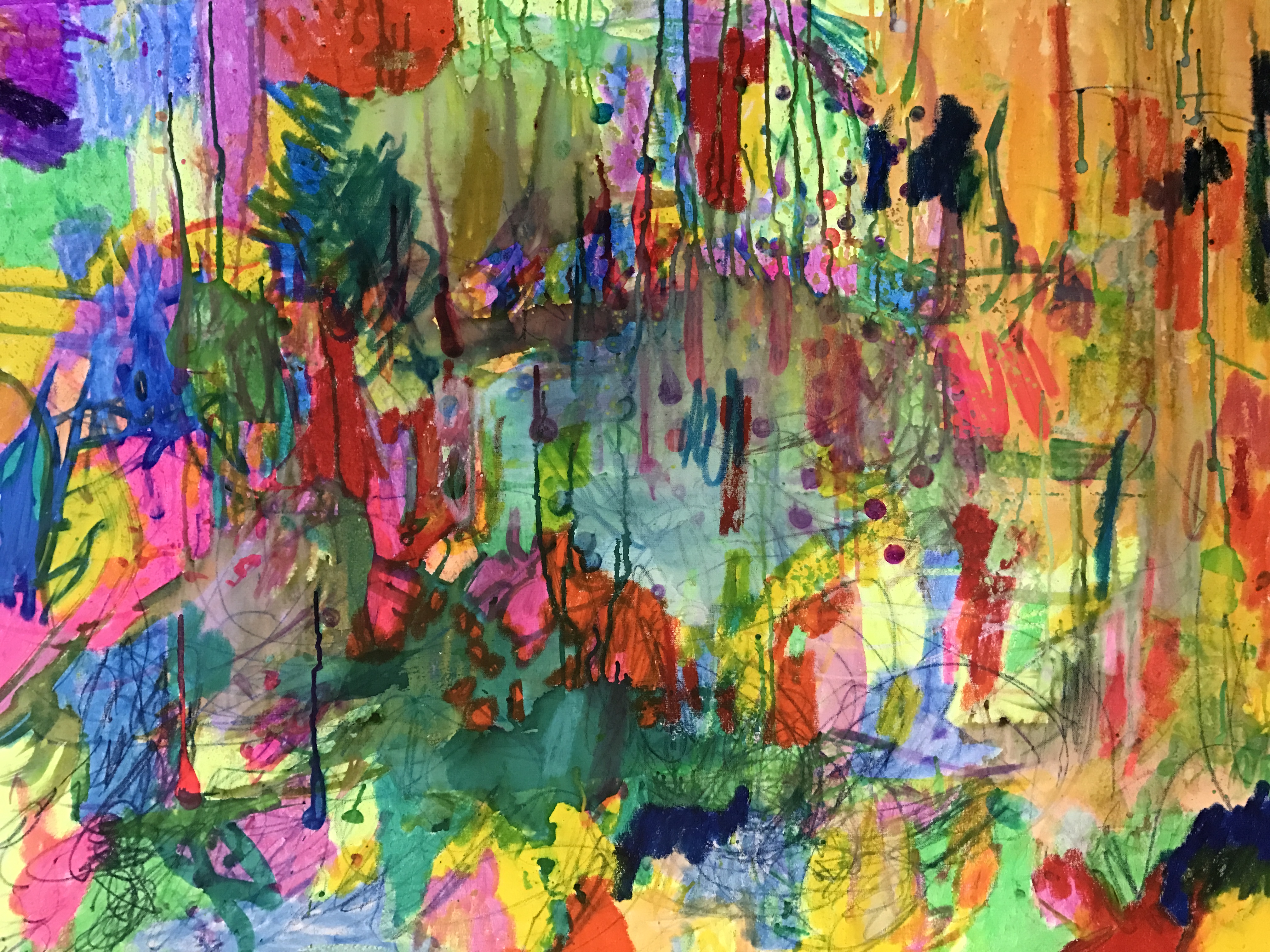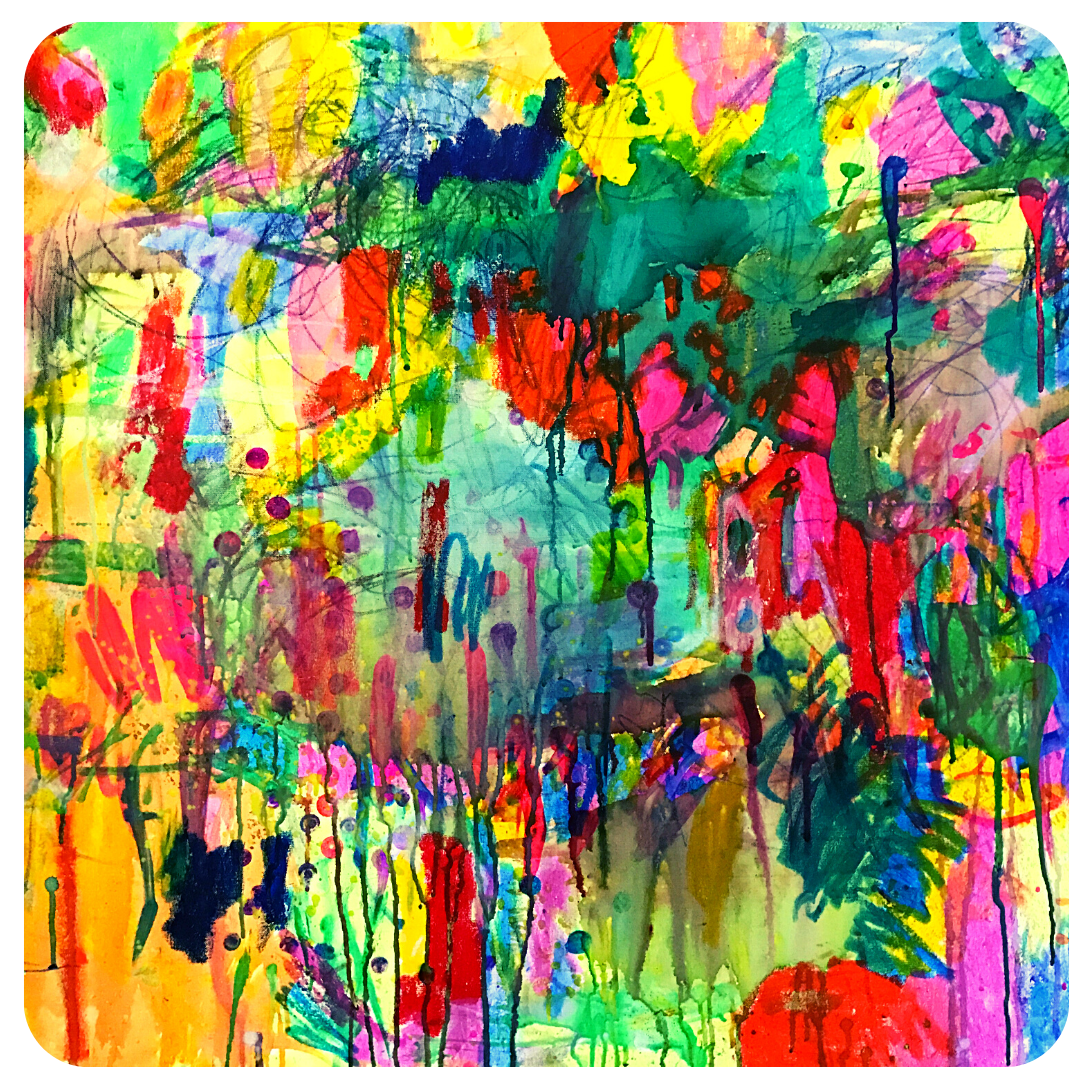Every year, I head into valentine-making activities with great ambition and optimism, only to realize it’s actually my kids’ project and not mine. If you silently struggle to take over as your kiddos make their valentines, I feel you. If you hate Valentine's Day because of all the unspoken crafty pressure, I feel you, too.
Last year, I had a real vision, and my vision even had a cute name—a "snowsaic." We were going to use liquid watercolors, muffin tins and ice trays to make loads of colorful frozen treasure. Then, we’d stick those colorful bits of ice into the side of our snow fort to create a Valentine's Day mosaic—it was going to be beautiful, it might have even gone viral. Until my kids got involved.
First, instead of making colorful ice they mixed the colors into puke-brown potion. They played treasure hunt and “crush the treasure” with all but two batches. Then, my 6-year-old asked if she could use the little ice we had to make a heart, and she made this.
Without even thinking, I tried to help her add more, my adult mind wanting to “complete” this heart or make it even more heart-shaped. A fabulous teacher, she told me, “No, mom, my heart’s all set.” Man, she was right. Her heart was fabulous. I heard how pleased she was and melted, then sat by myself in the snow for a minute.
This was not the snowsaic of my dreams, but, when I stopped to think for a minute, a lot of really good things had gone down in the past 48 hours. My kids actually did a lot—and they drove it all. They transformed ice and color and played treasure hunt—all while I got some work done. Then, Ivy made her heart—and felt really great about it.
My kids knew what I couldn’t see in the moment: that it’s the process, not the product, that matters.
What is process art?
Process art is a contemporary artistic movement; Guggenheim defines it as an art form that “emphasizes the process of making art.” The Museum of Contemporary Art says, “In process art, the means count for more than the ends.”
For kids, process art is often just what art is. It’s when kids direct the process and when they make their own choices (from what materials to use, to how they use them, to how long they spend on a project). Process art does not begin with an end product in mind; it is focused on the experience of discovery in the act of creating. Mostly importantly, process art is joyful! And, it can produce beautiful results like this:
How are crafts different from process art?
A good craft can teach kids listening skills, give practice in following step-by-step directions and can support the development of fine motor skills. Crafts tend to focus on a specific outcome, though, which leaves little room for kids to experiment or to add their own unique spin. Completing a craft also often requires an adult to keep kids on track, which can make for a less-than-joyful experience.
What are the benefits for kids?
We love process art because it:
- Develops creativity, flexible thinking and problem-solving skills
- Activates the senses
- Tends to last longer because it’s open-ended and kids feel in control
- Builds kids’ toolbox as they experiment with materials, their characteristics, their possibilities and how they work together. They make intentional decisions about which to use and how to use them later
- Involves less frustration and more joy
- Helps kids see themselves as artists because it doesn’t need to look a certain way.
And grown-ups benefit because kids of every age can do it together, immersed in play that doesn't require an adult to direct, giving us even more independent play time! (Plus, joyful and proud kids are even more fun to cuddle).
How do I facilitate?
- Set up an art space: Create a space that your child can access independently when inspiration strikes. Add a variety of materials in their own containers so that kids can easily find them. Read here for what to include in your home art center and here for tips on managing the mess of messy play.
- Get inspiration! Look at images of abstract art with your child to show them examples of art that is not intended to look like a specific image. Marvel at the lines, colors and shapes the artist chose.
- Invite rather than direct: Invite your child into art-making rather than telling them it’s time to make art. An invitation can be materials displayed in their space for kids to discover. Decide simply to create something to make someone else smile—a wonderfully open-ended prompt that can build empathy, too! Or, wonder out loud how they might use the materials you have on hand to create something.
- Want a starting place? Try making your own paint from natural materials like berries or spices in our Un-Recipe for Paint DIY activity. Turn chalk into all kinds of creations in our Let’s Chalk it Out DIY activity. Or enjoy breaking things up into bits and rebuilding them into something new in our Parts and Wholes DIY activity.
- Praise the process, not the outcome: If you are staying close by as they make art, find moments to compliment their focus and invite them to talk about their choices in colors and materials rather than asking what they made or suggesting that it looks like something specific.
- Revisit: In process art, there doesn’t need to be an end point to the creativity. When kids step away from their art, rather than assuming the artwork is finished, consider that they are taking a break from their work. Later, ask if they want to add to their art.
- Another (funny) take on "process over product"
Encouraging process art takes practice—for all of us! I teach the concept of process art and still, I get caught up in focusing on the product. Once you lean into it, though, you can feel the joy, too. I let these moments serve as reminders that art is a kid-driven process that doesn’t happen on our grown-up timeline or according to our grown-up vision. Getting out of our own way is the first step—and one I am so grateful to have this community to remind my adult brain to keep taking!



